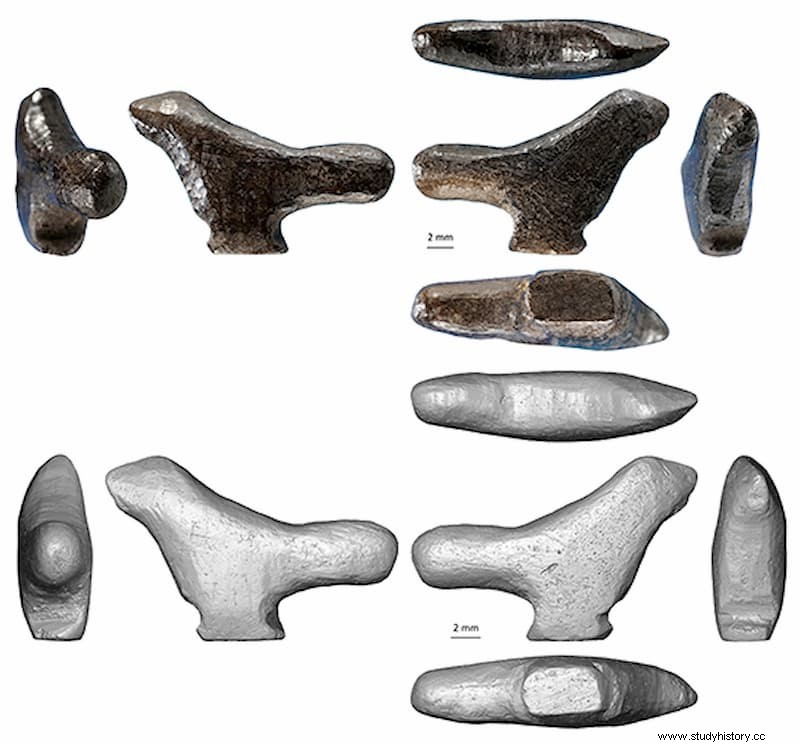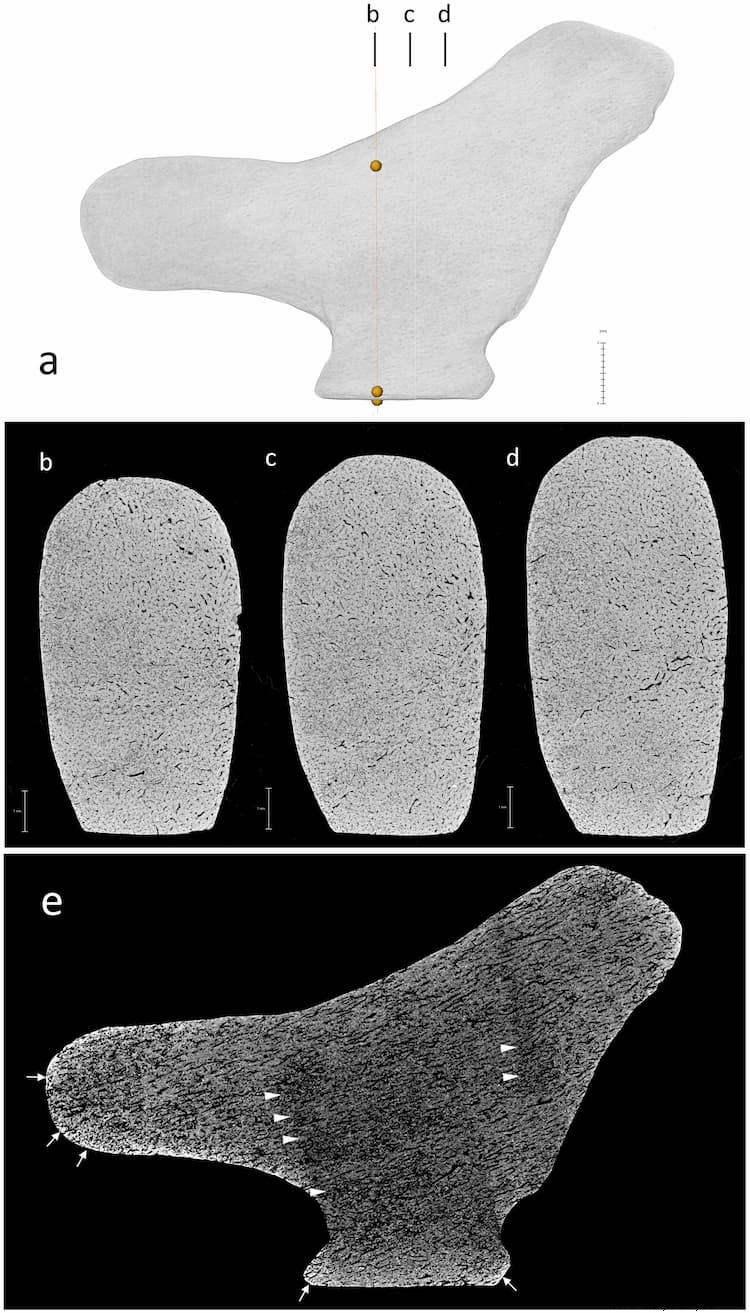Carved from burned bone, this miniature bird statuette is the oldest known Chinese work of art, according to an international team of researchers from the universities of Bordeaux, Shandong, Bergen, the CNRS (Comité National of the Scientific Research ) and the Weizmann Institute of Science. It was unearthed at the Palaeolithic site of Lingjing, in the Chinese province of Henan, in an archaeological context dating from between 13,800 and 13,000 years ago.
This discovery pushes back the origins of sculpture and animal representations in East Asia by more than 8,500 years. The stylistic and technical particularities of the figurine -it is the only known Paleolithic sculpture that represents an animal standing on a pedestal- point to an original artistic tradition, different from those known in Western Europe and Siberia.
The exceptional state of conservation of the object and the researchers' use of the most advanced analytical techniques, such as confocal microscopy and microtomography, have allowed the team to meticulously reconstruct the Paleolithic artist's approach.

Ivory carvings of European animals and mammoths dating to 40,000-38,000 years ago are our earliest examples of prehistoric humans three-dimensionally rendering the world around them, although due to a lack of evidence, it is unclear when this type of three-dimensional rendering happened. to form part of the cultural repertoire of prehistoric groups from the rest of the world.
During the initial excavation at Lingjing in 2005, eleven distinct stratified layers with ages ranging from 120,000 years to the Bronze Age were discovered. Most of the fifth layer had been removed during a pit digging operation in 1958. However, the rubbish heap from the pit's creation was still intact and nearby.
After sifting through the sediments, the authors discovered black chert identical to what remained of Layer 5 at the excavation site. They also discovered various artifacts, including pottery remains, burnt animal remains, and the Bird Figurine, which is carved from bone and is shaped like a songbird on a pedestal.

Using radiocarbon dating of the discovered burned animal remains (including a bone with anthropogenic scratch marks also seen on the bird carving), the authors were able to estimate the age of the bird figurine and associated bone material at approximately 13,400-13,200 years old. Based on evidence from other northern Chinese sites of similar age, this suggests that hunter-gatherers with stone tool technology occupied Lingjing and created the bird carving.
Bird depictions are a common theme in Chinese Neolithic art, with the oldest example of a jade songbird dating to approximately 5,000 years ago. This Paleolithic bone figurine predates previously known examples from this region and has several technological and stylistic elements that distinguish it from contemporary depictions of bird-like creatures in Western Europe and Siberia (such as the pedestal on which it perches). the Lingjing bird).
Although more examples of Paleolithic carving art are needed to confirm this possibility, the Lingjing bird figurine suggests the presence of a long artistic tradition specific to East Asia, with origins much earlier in the Paleolithic.
According to the researchers, this discovery identifies an original artistic tradition and pushes back more than 8,500 years the representation of birds in Chinese art. The figurine differs technologically and stylistically from other specimens found in Western Europe and Siberia, and could be the missing link that traces the origin of Chinese statuary back to the Paleolithic .
